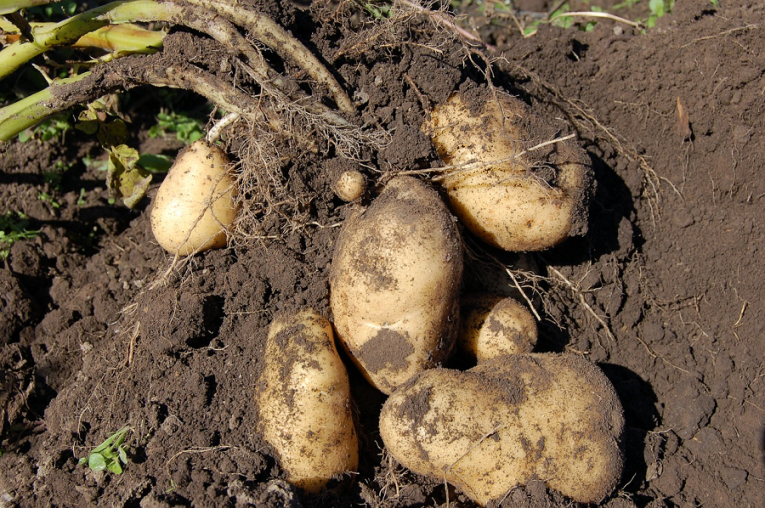Using Potatoes as an Alternative to Barley for Finishing Cattle
21 April 2022Stockfeed potatoes can be used as an alternative to expensive barley and are worth considering for feeding to finishing cattle to spin out home grown barley stocks if they are running low.
As with any finishing ration it is important to balance the ration appropriately for energy, protein and enough long fibre. Potatoes are very similar in nutritional composition to barley; except they are around 20% dry matter compared to dried barley at around 86% dry matter. Potatoes are around 9% crude protein which is slightly lower than average barley. 4 – 4.5 kg of potatoes will replace 1 kg of dried barley (barley at 14 – 12% moisture) and 3.8 – 4 kg will replace 1 kg of moist barley (barley at 18 – 21% moisture).
As with any new feed it is important to introduce potatoes gradually, even if cattle have been on an intensive ration for a while take out 1 kg of barley and replace with the equivalent potatoes every 3 – 4 days rather than all in one go. How the ration is presented to the cattle will also affect how the potatoes are eaten, if it is total mixed ration (TMR) it will be easier to swap some barley for potatoes. If it is an intensive, ad-lib cereal ration a run of potatoes once or twice a day will be more appropriate.
Potatoes are great for stimulating appetite and adding a bit of moisture to a ration, which can be good if finishing cattle have gone a bit ‘stale’. As a guide feed up to 5 kg of potatoes for every 100 kg of liveweight, up to a maximum of 30 kg/head/day. Always seek advice from a nutritionist prior to feeding to check that the ration is well balanced to ensure cattle continue to perform well.
A few cautions when feeding potatoes to any stock:
- Make sure potatoes are as clean as possible, too much dirt and soil can cause clostridial disease problems and affect intakes.
- If potatoes are to be fed whole, ensure they are always fed at ground level to reduce the chances of cattle choking.
- Always balance the potatoes with sufficient protein to ensure that the rumen is working as effectively as it can to turn the feed into weight gain – cheap feed is counterproductive if the rumen is not working well and cannot utilise the feed.
- Green and sprouted potatoes contain chemicals – glycoalkaloids (GA), which are toxic to animals. These toxins are like the ones found in Woody and Black Nightshade, which is not surprising since these plants are members of the same family as the potato. Potatoes always contain small amounts of GA’s – even if they are not green. Exposure to light and sprouting results in a large increase in the concentration of the toxins, with the sprouts containing up to 30 times as much as the green tubers. White sprouts contain about 30% to 40% less toxins than green sprouts so it is important to note that the sprouts do not have to be green to be toxic. Cattle and sheep are more resistant to toxicity than pigs or humans and it appears that some of the toxin is destroyed in the rumen. Knock off any sprouts as much as possible prior to feeding
- It should be noted if feeding potatoes at grass, if the grazing is in rotation with growing potatoes, there is a risk of contaminating the ground with powdery scab (14 years+ to eradicate) and potato cyst nematode (PCN) (7 years+ to eradicate). This also applies to cattle fed tatties indoors and the dung being spread on land for potatoes.
Karen Stewart, karen.stewart@sac.co.uk
Sign up to the FAS newsletter
Receive updates on news, events and publications from Scotland’s Farm Advisory Service

